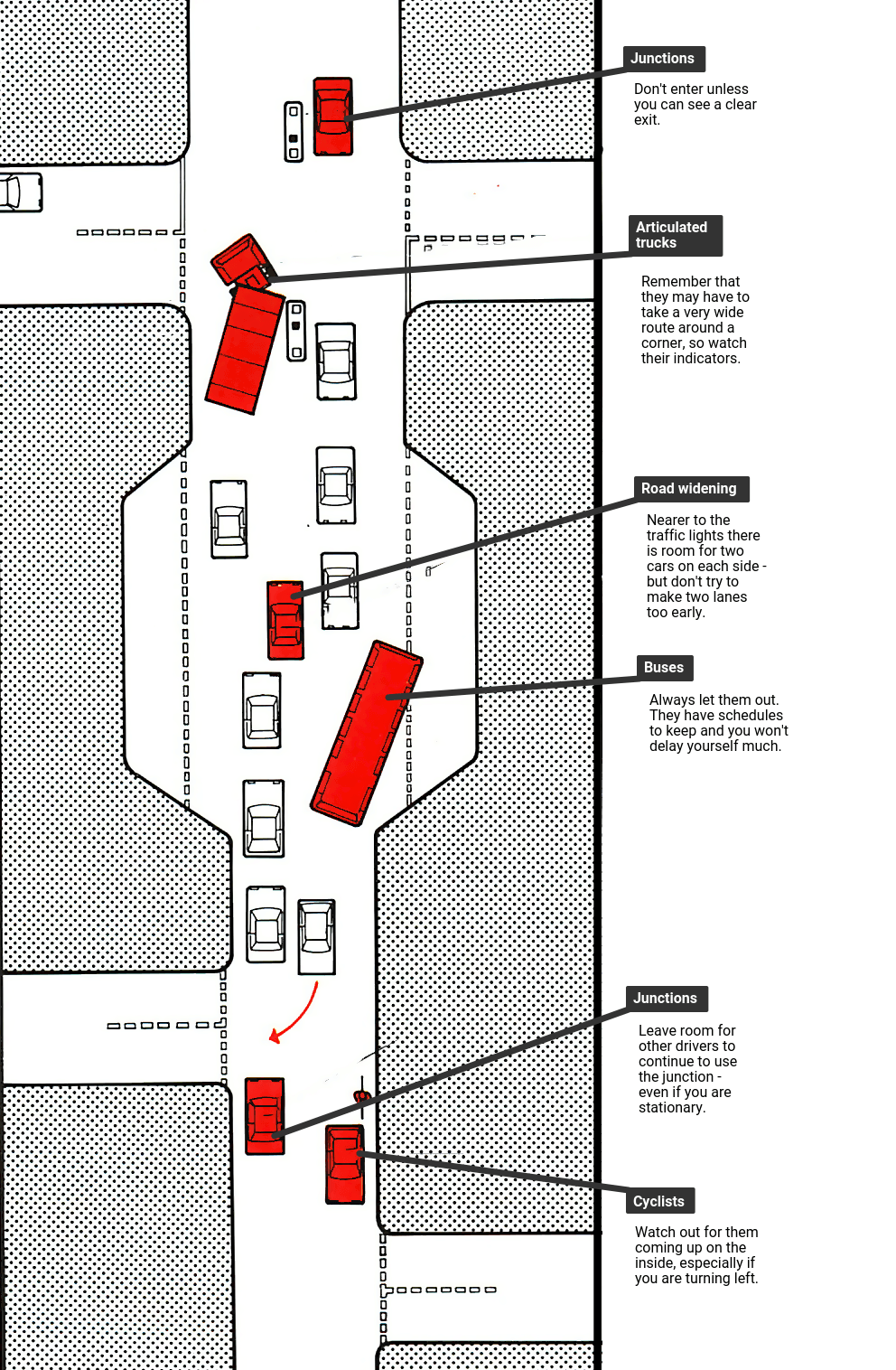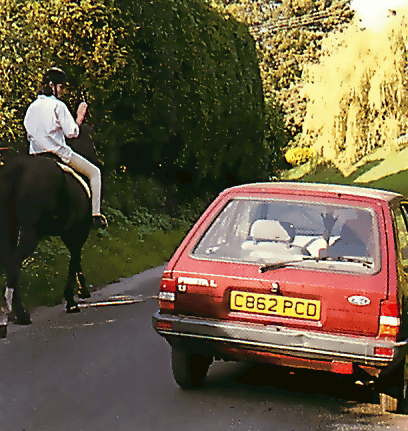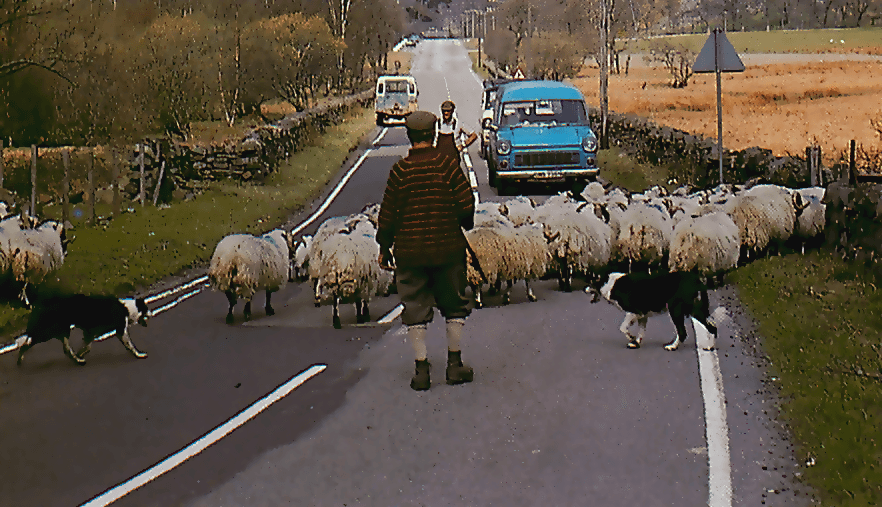Making allowances for other road users
The Video Course teaches you everything about modern cars.

Consideration for other road-users is one of the most important assets a driver can have. Not all road-users have the luxury of all-round vision and easy manoeuvrability that you have with a car, so you have to try and work out other drivers' blind spots and appreciate the difficulties they're up against.
Remember that some types of vehicle have different priorities and needs according to their different speeds, sizes and abilities.
Town driving
It only takes a couple of unsympathetic drivers to cause a jam. There's no point in blocking people in at junctions - letting vehicles out will improve the traffic flow and you lose only a couple of car lengths of your distance, which is not enough to significantly affect the journey time.
An important point in the Highway Code which helps avoid traffic jams is never to enter a junction, even one that does not have a yellow box painted on the road surface, unless your exit is clear.
Stop-start vehicles such as buses or milk floats can be frustrating to drive behind in heavy traffic, but obstructing their re-entry to the traffic stream doesn't help the vehicle flow. Many cities have rush-hour bus lanes: it is an offence to use them then and even more thoughtless to park in one.
Delivery vehicles, especially heavy lorries, often have to reverse into narrow gateways or yards. They can't always signal their intention to do this easily, so the driver might pull over to the right or stop in the middle of the road to give himself room to manoeuvre.
Cyclists
Give cyclists room; it's particularly unpleasant having to ride in the gutter and it doesn't leave any room for error or for side winds that can blow the bike and rider across the road. Watch out for cyclists trying to turn right and bear in mind that,
although it's foolhardy, many cyclists go out at night without lights and leave themselves almost invisible.
Motorcyclists are better able to look after themselves, but a motorcycle has two major drawbacks - it is not easily seen and its wet weather stability and braking are inferior to yours.
So check carefully for motorbikes before you pull out of junctions or change lane and remember that if the rider has the headlight on it can be very difficult to gauge the motorcycle's speed. Try not to brake too hard on wet roads if there is a motorcycle following.
Pedestrians
Pedestrians are particularly vulnerable on the roads; children and old people are the most at risk. Children can't estimate speed very well and sometimes simply forget their kerb drill.
So always drive with extreme caution near schools (which are marked by signs, often with a pair of flashing beacons underneath) and in residential areas where parked vehicles can mask children before they step out. Other obvious high risk spots are parks, playgrounds and ice cream vans.
Be very careful where you see children on bicycles - the modern BMX bike makes it possible for them to cross normal boundaries, such as kerbs, at will.
Country roads

Although town driving presents the most hazards, country roads have their own set of problems. Remember that round the next corner there may be pedestrians force d to walk in the road because there is no path and the verges are awkward to walk on. Most pedestrians will climb up on to the verge when they see you approach, but don't force them by driving too closely.
Or there may be a horse and rider on the road. Most horses are road-trained but, nevertheless, pass them slowly and quietly in case they shy. It's best to give them plenty of room by pulling over as far across to the right as you can - provided that there's no oncoming traffic.
Cyclists negotiating steep hills need as much - if not more - space as those in town. They often have to stand on the pedals and slew the bike from side to side to reach the top and this takes room.
Livestock hazards

A herd of sheep or cows can effectively block a road to all other traffic. There's nothing you can do to get past, so it's best to sit and wait patiently. Any attempts to squeeze past will probably panic and scatter the animals and delay you for longer.
Remember that mud and droppings on the road warn of nearby animals — perhaps just around the next corner.
You can pass horses with caution. Once you are sure that there is no traffic approaching from the other direction, pull well over to the right and drive past—a high gear will keep engine noise down.
Motorways
Courtesy is needed on motorways and trunk roads. You won't slow your journey much by hanging back for a short time to let one truck overtake another, but if you accelerate and block it in you will force the truck to lose speed. It takes a laden truck a great deal of time to regain lost speed, so that move will cause tempers to rise and could even result in an accident .
A car hogging the middle lane on a motorway when the left-hand lane is free is one of many people's pet hates - and with good reason as it leads to dangerous bunching. If the car in the middle is also travelling slowly, traffic restricted to the two left-hand lanes cannot get past, which makes matters even worse. The considerate driver will always move back into the left-hand lane as soon as possible after overtaking to avoid holding up faster traffic.
Emergency vehicles
Be on the alert for emergency vehicles. You don't need to panic-brake to a halt if the road ahead is clear and wide enough; just pull over after showing that you are aware of the vehicle's approach by signalling left.
The Ultimate Car Mechanics video course
Learn everything about modern cars from our new video series.
Learn more >-
We build a Mazda MX5 Miata from scratch
We start by tearing down and then rebuilding the whole car.
-
Every part explained
There's ridiculous detail on every part. Clearly and easily explained.
-
All modeled in 3D
We've created the most detailed 3D model ever produced so we can show you everything working.






